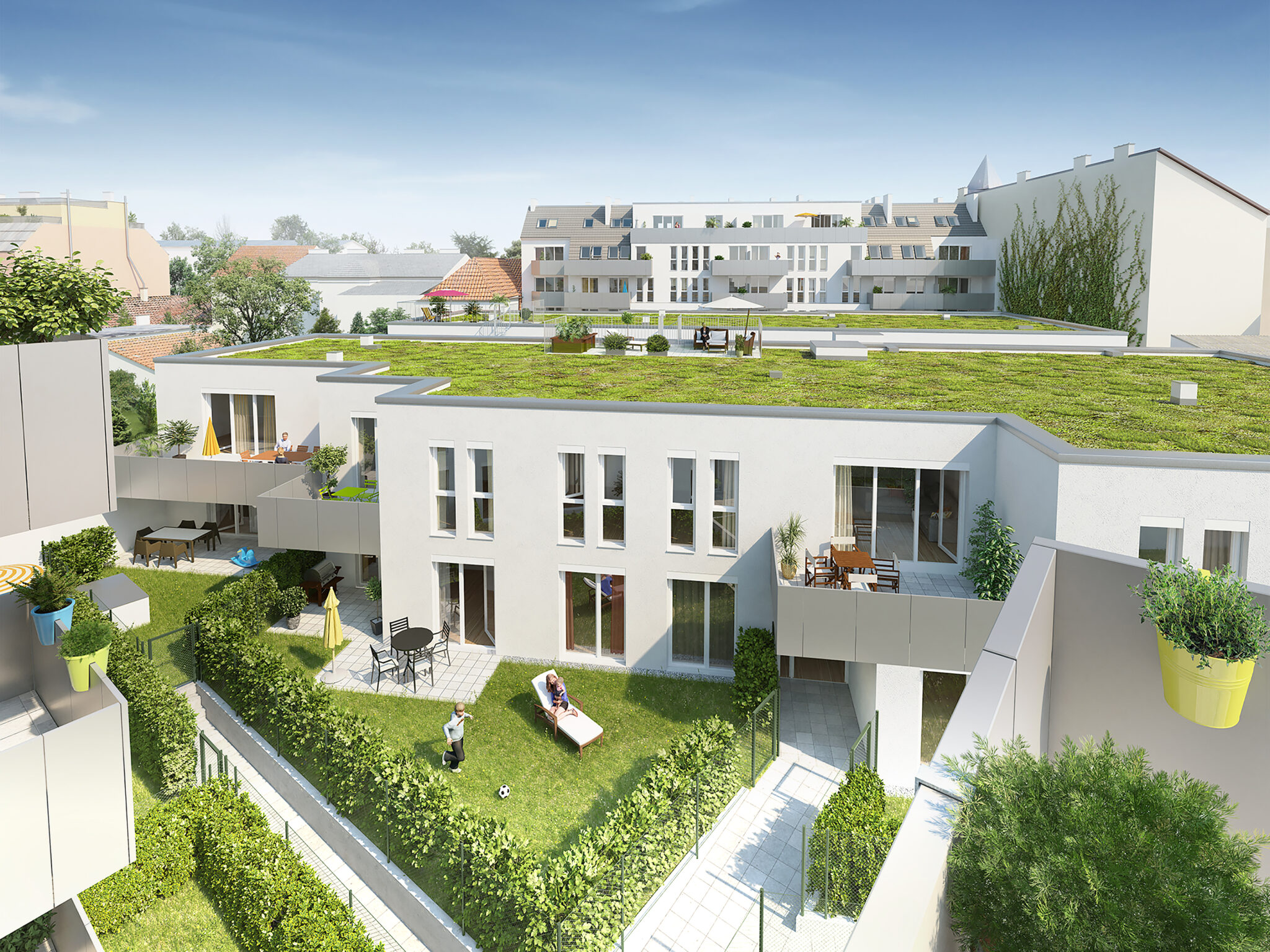You want to have more warmth at home in the winter without paying extra for heating and cooler in the summer without constantly turning on the air conditioning. This can be solved with a green roof. The flora on the upper floors is not only a work of art, but also helps prevent temperature peaks, binds harmful substances, can store rainwater and at the same time extends the life of the building materials used. Moreover, it is not a laborious and complicated matter. If the supporting foundation of the roof is properly made, the overgrown area requires almost no special maintenance and the care of such an area is comparable to a regular garden. If you don’t want to make too much effort, you can plant plants that don’t require any care and are sufficient with rainwater.
Which roofs can be greened? That’s the most common question homeowners come to the experts with when considering a green roof. The answer is often surprising. Many roofs can be made green, from garage roofs to house roofs. It is enough that the static prerequisites are met and that the roof construction is properly executed. The design of the roof garden is based on the same design principles as for the designs of other roofs. At the same time, there is no need to worry about the lifespan of green building roofs. Whoever builds according to the recommended standards and with expertise will get a roof with a very long life. Experts estimate it to be around 40 years old.
“The greening of building surfaces, in addition to its aesthetic significance and improvement of living conditions in cities, has recently become an effective and popular tool for combating climate change. Currently, not only experts but also a large part of the population are aware of the importance of such solutions, because weather fluctuations with their extreme manifestations are becoming more and more frequent,” explains Martin Trešl from Austrotherm CZ, which, among other things, specializes in components for green roofs.
According to him, the problem of recent years has been, for example, huge torrential rains, which the sewerage systems of cities with a predominance of paved, impermeable surfaces cannot absorb. Added to this are the extremely hot summers, especially in densely populated agglomerations, which inflame the dark surfaces of roads, roofs and building envelopes. This is also why more and more projects are appearing in Europe, the result of which are more and more green roofs, planted roof terraces and roof gardens or entire “green” facades.
Green roofs can be made in several variants, but the most common are warm or inverted roofs. For a warm roof, materials with excellent thermal insulation properties from hardened foam with a closed pore structure are suitable as insulation, which enables a space-saving insulation solution with a very low height. In contrast, the inverted roof option prevents the greenery from weighing down the building or damaging it. “Water and pressure resistant insulation protects the seal and creates a great foundation to build on. Extruded foam with a closed pore structure and excellent thermal insulation properties is mainly used here. It is resistant to moisture, rot and pressure,” adds Trešl.
More demanding to maintain is the so-called intensive vegetation roof, where lawns, various bushes and trees are planted. Anyone who wants to “intensely” green their roof must expect a greater static load. This type of greening needs a substrate thickness of more than 20 cm and can therefore only be designed for flat roofs with a load capacity of around 1000 kg/m2.
Green roofs are not only very nice to look at, but also bring a number of positive effects. Thanks to evaporation, their plants cool their surroundings, lower the temperature and reduce the accumulation of heat in the city. At the same time, by equalizing the temperature, they take care of a pleasant climate inside the building (or in the rooms that are under the roof) and protect them from summer temperature peaks. In winter, vegetation and the roof substrate, on the other hand, prevent too much heat from escaping, thereby acting as additional thermal insulation. The results of studies by HafenCity University in Hamburg have shown that a green roof is up to 30 degrees Celsius cooler in summer than a normal roof.
Another of their advantages is the slowing down of runoff and the storage of rainwater, thereby contributing to reducing the risk of local flash floods. In the case of roofs with a gravel layer, approximately 80 to 100 percent of rainwater is directed to the sewer, but in the case of roof gardens it is only 30 percent. The rest gradually evaporates into the urban atmosphere. The benefit of collecting rainwater is that it cools the air locally through evaporation and improves the microclimate of the immediate surroundings. Green roofs can also reduce other negative effects of the urban environment, including noise, and contribute to improving the CO2 balance.
“There is also great potential in having raised gardens that provide a place to relax for people who live in densely built-up parts of cities. There doesn’t have to be a forest on the roof right away. Even flowers or beds with vegetables, even such a planting of unpretentious succulents, show very positive effects. While in our country it is considered new

